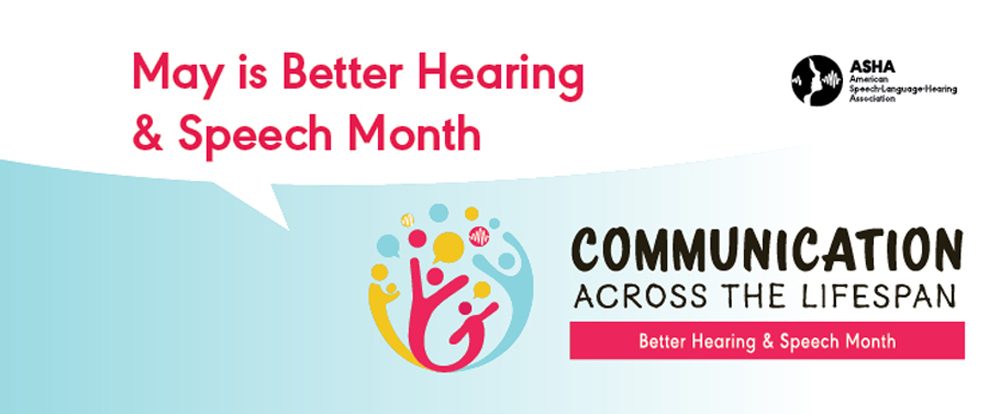Each May, ASHA recognizes Better Hearing & Speech Month (BHSM), an opportunity for ASHA members to help raise awareness about communication disorders. This year, the BHSM theme is “Communication Across the Lifespan,” with each week focusing on a different stage of development, starting with infancy. During each week in May, Context will feature select content based on that week’s BHSM theme. We invite you to follow us weekly as we share the latest research published in the ASHA Journals!
Social communication is the use of language in social context, but at a preverbal age, social communication may include looking at people and using gestures. This year, during the first week of BHSM, social communication in infants is a special focus. Communication is often learned by watching, listening, and interacting with parents and caregivers. These important and influential adults can teach children—starting with when they’re infants—by communicating often and by responding to sounds and gestures. Check out some of the offerings in this area from the Journal of Speech, Language, and Hearing Research.
- Lexical Development in Young Children With Autism Spectrum Disorder (ASD): How ASD May Affect Intake From the Input. Authors examine how difficulties with social communication that are associated with ASD may interfere with a child’s ability to learn words.
- Ordinary Interactions Challenge Proposals That Maternal Verbal Responses Shape Infant Vocal Development. This article explores whether or not maternal responses to a child’s vocalization affect vocal development of infants.
- Vocal Development in Infants and Toddlers With Bilateral Cochlear Implants and Infants With Normal Hearing. In this study, Finnish infants and toddlers with bilateral cochlear implants were compared with age-matched peers who have normal hearing and typical development. This comparison was done in order to track the process of vocal development.
- Utterance Duration as It Relates to Communicative Variables in Infant Vocal Development. Researchers analyzed infant utterances bimonthly at 8–16 months old, noting facial affect and eye gaze direction to search for developmental patterns.
- Early Motor and Communicative Development in Infants With an Older Sibling With Autism Spectrum Disorder. Infants with an older sibling who has autism spectrum disorder are at a high risk for autism spectrum disorder as well as other developmental difficulties. Authors looked at findings from existing research about motor and communicative development in these infants.
Social delays after 1 year of age may signify a social communication disorder or autism spectrum disorder. During BHSM, ASHA reminds parents that it’s never too early to seek the advice of a pediatrician or speech-language pathologist in order to identify or rule out a possible disorder and begin treatment immediately.
BHSM resources—including printable posters, handouts, and bookmarks—are available on ASHA’s official BHSM website. For social media users, there are even Facebook and Twitter cover photos, as well as a contest to win prizes for promoting BHSM. We hope you join us in getting involved in Better Hearing & Speech Month!







